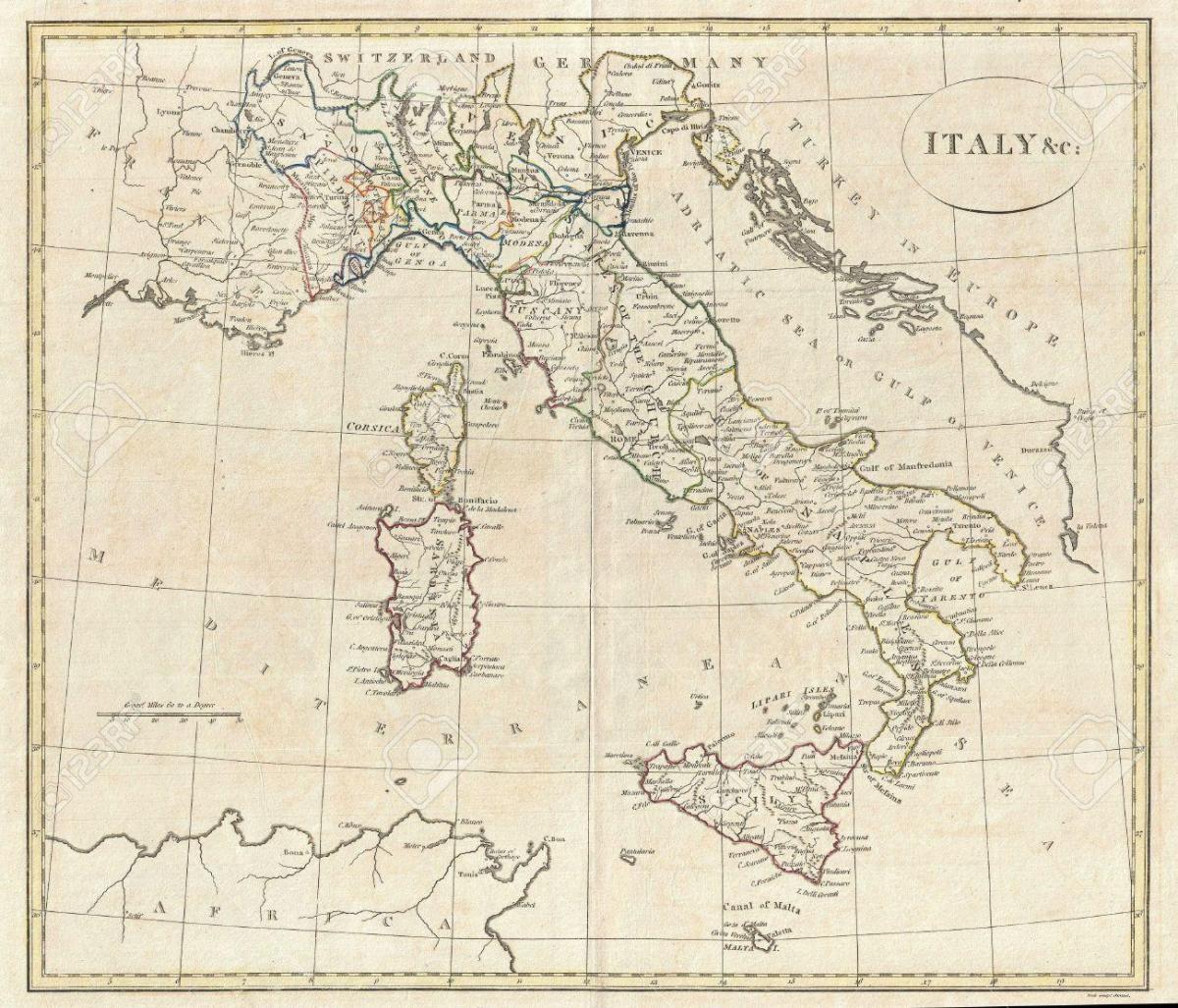search
Old map of Italy
Map of Italy old. Old map of Italy (Southern Europe - Europe) to print. Old map of Italy (Southern Europe - Europe) to download. In prehistoric times, the old Italian peninsula was rather different from its current shape. During the last Ice Age, the islands of Elba and Sicily were connected to the mainland as its shown in the old map of Italy. The Adriatic Sea was far smaller, as it started at what is now the Gargano peninsula, and what is now the bay of Venice was a fertile plain with a humid climate. The presence of the Homo neanderthalensis has been demonstrated in archaeological findings dating to c. 50,000 years ago (late Pleistocene). Homo sapiens sapiens appeared during the upper Palaeolithic.
Remains of the later prehistoric age have been found in Liguria, Lombardy (stone carvings in Valcamonica) and in Sardinia (nuraghe). The most famous is perhaps that of Ötzi the Iceman, the mummy of a mountain hunter found in the Similaun glacier in South Tyrol, dating to c. 3000 BC (Copper Age) as its mentioned in the old map of Italy. During the Copper Age, Indoeuropean people migrated to Italy. Approximatively four waves of population from north to the Alps have been identified. A first Indoeuropean migration occurred around the mid-3rd millennium BC, from population who imported copper smithing. The Remedello culture took over the Po Valley. A second wave of immigration occurred in the Bronze Age, from the late 3rd to the early 2nd millennium BC, with tribes identified with the Beaker culture and by the use of bronze smithing, in the Padan Plain, in Tuscany and on the coasts of Sardinia and Sicily.
In the mid-2nd millennium BC, a third wave arrived, associated with the Terramare culture. Such culture takes its name from the black earth (terremare) residue of settlement mounds, which have long served the fertilizing needs of local farmers. The occupations of the Terramare people as compared with their Neolithic predecessors may be inferred with comparative certainty. They were still hunters, but had domesticated animals; they were fairly skillful metallurgists, casting bronze in moulds of stone and clay, and they were also agriculturists, cultivating beans, the vine, wheat and flax as you can see in the old map of Italy.


